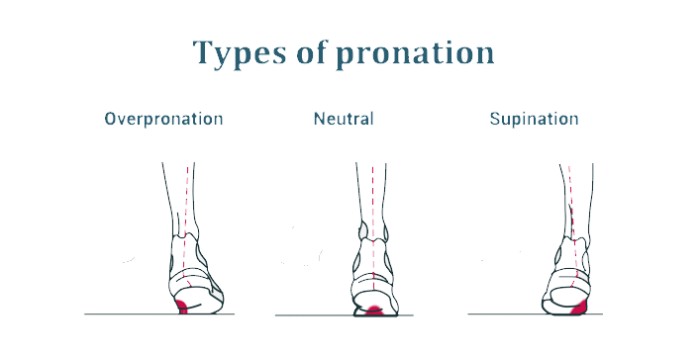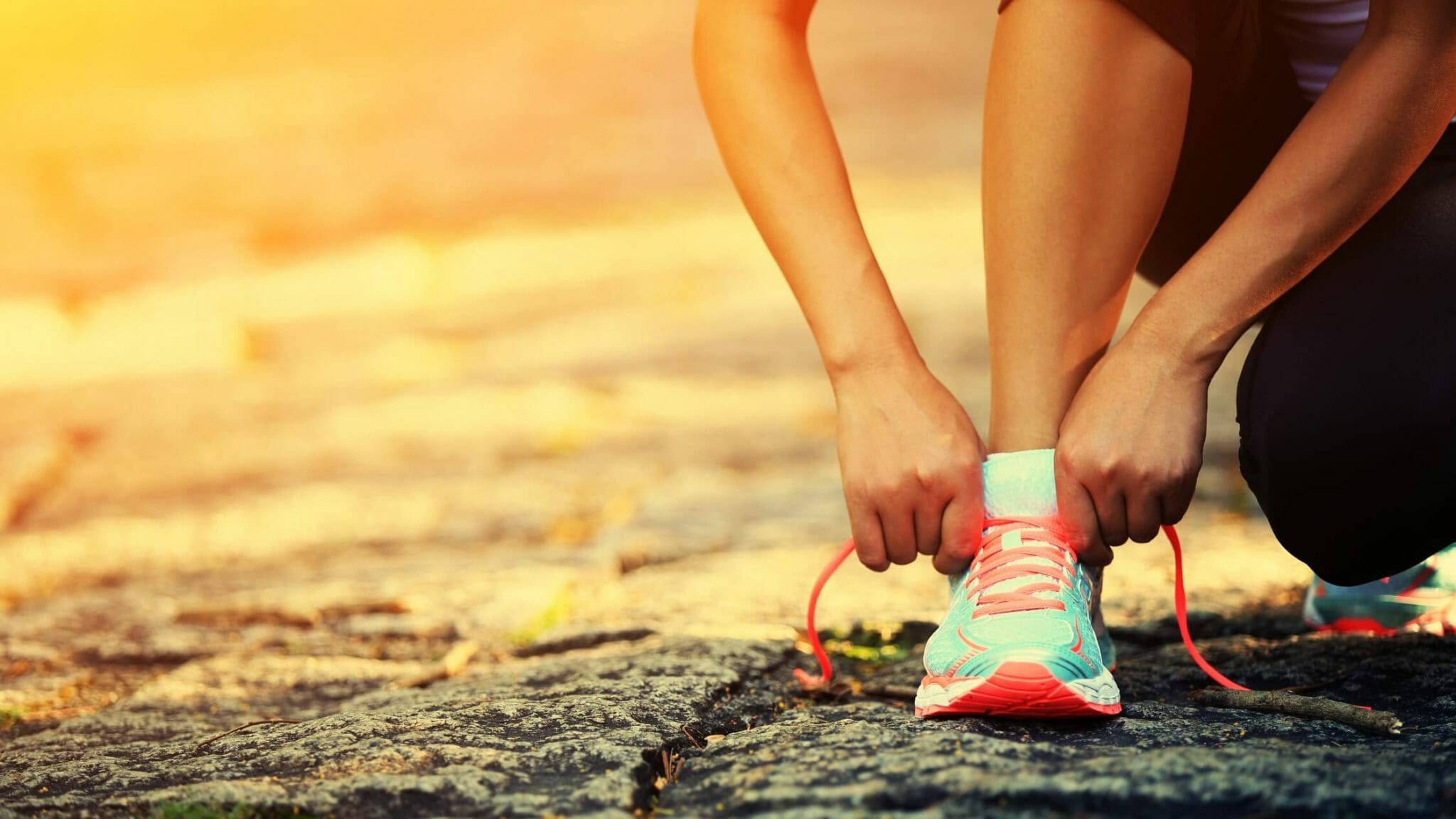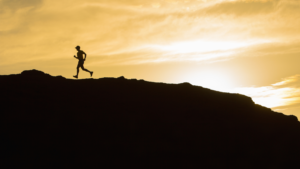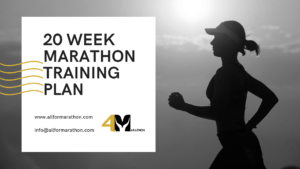Are you in the market for some new running shoes? If you’re training for a marathon, it’s vital to find a shoe designed specifically for long distances. In this blog post, we’ll look at some of the best running shoes for marathon preparation in 2023. Whether you’re looking for a lightweight racing shoe or something more supportive, we’ve got you covered! So read on to learn more about the latest and greatest running shoes on the market. You might just find your perfect pair!
What should be considered before buying?
It is a proven fact that running shoes made with high-quality materials can substantially affect your performance (especially the new generation of carbon fiber plate shoes). But it is also a fact that the market is full of different models that claim to be the best running shoes out there. But are they really? What should you look at when deciding which ones to buy?
Terrain, weight, cushioning, and breathability
First of all, you need to consider the running surface. You will probably choose different type of shoes for road running and forest running. Secondly, you will look at the weight of the shoe. You don’t want anything too heavy that will weigh you down during a half-marathon or marathon race.
In addition, cushioning. Advanced cushioning systems can help protect your feet from the impact of long-distance running. This is especially important if you have any history of injuries or joint pain. Finally, another crucial feature, the breathability. Modern fabrics allow your feet to breathe better. The last thing you want is for your feet to feel sweaty and uncomfortable while you’re running a marathon.
Look for a good fit
The weight of your foot strike or the amount of pronation are other factors that must also be taken into consideration while choosing the right running shoe. However, finding the most quality running shoe on the market doesn’t mean that it will be the best running shoe for you. it’s important to keep in mind that not every shoe will be a good fit for you, no matter how comfortable it may seem. To get the best fit, you will need to find a shoe that conforms to your foot shape.
Road or trail shoes?
The first step in finding the best running shoe is to decide what type of running you will be doing most often. If you’re planning on sticking to the roads, then you’ll need a different type of shoe than if you’re going to be hitting the trails.

Road
Road running shoes are designed for, well, running on roads! They tend to be lighter in weight with more soft cushioning, shock absorption, and bounce. That is because, on the road, you’ll experience a greater force of impact on your muscle tissues than you would off-road wearing trail shoes. Road running shoes also tend to have a narrower width to provide a more efficient stride.
Trail
Trail running shoes, on the other hand, are designed for rougher terrain. They usually have more robust construction, in order to provide some extra support. This is because they need to protect your feet from roots, rocks, and other obstacles you might encounter on the trail. Most trail shoes also tend to have a wider width to provide stability on uneven surfaces.
Comfort above everything else
Once you’ve decided if you need a road shoe or trail shoe, a lighter shoe for shorter runs, or a more cushioned and supportive shoe for long-distance runs, it’s time to start thinking about comfort. After all, you’re going to be spending a lot of time in your shoes, so they need to be comfortable. There are a few things you can do to ensure that your shoes are comfortable.
Size of the shoe
First, make sure that you buy the right size. There is nothing worse than trying to run in shoes that are too small or too big. NEVER buy running shoes just because you love how they look, especially when they don’t fit you perfectly. Your nails and toes will pay for it with blood.
According to my experience, it is always a good idea to buy running shoes half a size bigger than your daily wear shoes. You want to give your toes a little bit of extra space as your foot will move a bit during the workout, especially when running downhill. Remember this when buying your shoes online.
Shoe width
Second, consider the width of the shoe. If you have wide feet, make sure to buy a shoe that is wide enough to accommodate them. There are some quality wide running shoes made by Hoka, Saucony, or Brooks.
Last but not the least, break in your shoes before you start running in them. This will help to avoid any nasty blisters! An easy way to do this is to wear them around the house for a few hours each day for a week or so before you take them out.
Heel-to-toe drop in running shoes
One of the essential factors in choosing a running shoe, especially if you are a more experienced runner is the heel-to-toe drop. This is the difference in height between the heel and the toe of the shoe.
Lower drop
Low-drop shoes (drop around 4 mm or less) bring your foot will be closer to the ground, which can provide better stability and a more natural stride. This is a good choice for runners looking for a lighter, more minimalist shoe.
Higher drop
Conversely, a higher drop (8 mm or more) will raise your heel, which can provide better shock absorption for runners who tend to land on their heels. High-stack running shoe is a good choice for long-distance runners (marathon and more) looking for more cushioning.
Zero drop shoes
There are also so-called zero drop shoes, minimalist “barefoot” shoes, very light, with almost no cushioning, they put your heel and forefoot at the same level. They are made for more experienced runners looking for a more natural stride.
There are pros and cons to all three types of shoes, so it’s important to find what works best for you. If you’re not sure, it’s always a good idea to try out all types of shoes before making a decision.
What is pronation and why matters?
When you run, your foot rolls inward to absorb the impact of each step. It’s a natural movement that occurs as your foot adapts to the surface you’re running on. This is called pronation and it’s a natural and necessary part of the running gait. There are three types of pronation.

Neutral pronation
If you have neutral pronation, your foot rolls inward about 10 – 15%. This is the most efficient and safest way to run. Your foot rolls naturally inside and allows you to keep your ankles and legs aligned while absorbing all the shocks. If you have neutral pronation, you are free to search for any kind of neutral shoe with either no support or very little support for your arches.
Overpronation
Overpronation means that your foot rolls inward more than 15%. This can lead to problems because it puts extra stress on the joints and muscles in your feet and legs. Overpronation is a condition that arises when the arches of your feet flatten more than they typically would due to improper gait. However, you can correct the situation by exercising and using orthotic insoles in your shoes.
People who tend to overpronate are advised to purchase stability shoes. A stability shoe is designed to provide more support and structure in the midsole, which prevents your foot from rolling too far inward.
Underpronation
Underpronation (also called supination) is a situation when your foot doesn’t roll inward enough. If you supinate then your weight tends to roll to the outer edge of your feet. This may lead to problems because your foot doesn’t absorb the impact as well as it should. If you are underpronator, you also want to consider buying running shoes with more support for your arch.
What is arch support?
Running shoes with arch support are specifically designed for runners who tend to over or underpronate. The arch support is the part of the shoe that cradles your foot and provides stability. It’s important to choose a shoe with the right amount of support for your foot type.
There are many different types of shoes on the market. Remember that the best running shoes are the ones that fit your foot type. It can easily be a premium running shoe or a simple budget shoe. If you’re not sure what type of shoe you need, it’s always a good idea to consult with a professional, ideally a sports physio, who can also help you to measure your pronation.
Running shoe anatomy
All running shoes are designed to fit the foot in a specific way, and each part plays an integral role. Even a small change can make a big difference in your experience. Here, we break down the main elements of shoes so that you can identify them properly and ensure they fit your needs.
The upper
The part of the shoe that is above the sole is called the upper. In the past, brands made their uppers using different fabrics and mesh sewn and glued together. Nowadays, more modern versions use knitting, 3D printing, and recycled materials to create a seamless one-piece fit. The upper should lay smoothly on the foot without binding, chafing, or bunching anywhere.
The ankle collar
The ankle collar is the shoe part that goes around your ankle and keeps your heel in place. Some brands use thick padding to help with this, while others use a different shape. Pay attention if your heel slips when you walk, how the padding feels on your ankle bones, and whether the curve on the back of the shoe bothers your Achilles tendon.
The heel counter
The heel counter is a cup that supports your heel. Some shoes have an external heel wrap that does the same thing. Other, more minimalist shoes don’t have a heel counter, to allow full freedom of movement. Research has shown that heel counters do not prevent motion, but they do center the heel for a stable heel strike. Both neutral shoes and stability shoes use heel counters. Always make sure that the heel counter allows comfortable ankle motion.

The saddle
The saddle of the shoe is the area around the arch of your foot between the ball and the ankle. The saddle helps hold the shoe on your foot. Designers have made different overlays, eyelets, and lacing systems to fit any foot shape. Make sure that the saddle fits your foot well and provides a secure feeling with no slippage while allowing for natural movement during your stride.
The toe box
This part of the shoe goes from the front of the eyelets to the front end of the shoe. At the end of it. there is often a reinforced toe bumper that protects your toes from getting hurt, especially in trail shoes. It is good practice to look for a wide-toe box that does not cramp or rub your toes. As I already mentioned, half a size of extra space is desirable. It should be possible to wiggle each toe inside the shoe comfortably.
The midsole
The midsole consists of midsole foam which is the layer of foam between the outsole and the upper. It’s usually made of a light, soft material like EVA (ethylene-vinyl acetate) foam, which compresses on impact to absorb shock.
The midsole helps protect your feet and legs from the hard ground. Some shoes have a stiffer midsole to provide more support (like stability shoes), while others have a softer midsole for a more cushioned feel (like neutral shoes).
The outsole
The outsole is the bottom layer of the shoe that comes into contact with the ground. It’s usually made of rubber or similar material, and it’s designed to be durable and grippy so that you can run on any surface.
The outsole also has different patterns of lugs (the raised bumps on the bottom of the shoe) to provide traction on different terrain. When choosing a shoe, pay attention to the lug pattern and make sure it’s appropriate for the surfaces you’ll be running on.
The insole
The insole is the removable layer of cushioning that sits on top of the midsole. It’s usually made of foam or gel, and it provides extra cushioning and support for your foot. Many shoes come with a basic insole, but you can also buy aftermarket insoles to customize the fit and feel of your shoe.
Best Road Running Shoes For 2023
Looking for running shoes fitting your running style, you may quickly get lost in the sea of options available on the market. To save you time, we’ve put together a list of the 4 best running shoes for road running in 2023.
Hoka One One Clifton 8
Hoka is widely considered to be the best brand for men’s and women’s running shoes, and the Clifton 8 is the latest version of their popular Clifton road shoe. Just looking at it, you will notice its extraordinary design. But looks are obviously not the first thing that should be considered when purchasing new pair of running shoes.

So, what makes the Clifton 8 such a great running shoe?
Well, for starters, it is very lightweight. It weighs in at only 8.8 ounces (250 g) for a US M9.0 and 7.2 ounces (215 g) for a US W8.0. This makes it one of the lightest road running shoes on the market. Despite its light weight, it is still able to provide solid support similar to some heavier shoes.
Comfort, comfort, comfort
Comfort is the main reason why you buy the Hoka Clifton 8. Plush and comfortable, these shoes have 33 mm of Hoka midsole foam under the heels with a thick 5mm insole adding to their feeling.
Soft but durable
The best running shoes make you feel soft and comfortable on the inside but are tough and durable on the outside. And it is definitely the case with the Clifton 8 running shoe. This durable shoe will last at least 500 miles for most runners.

Underfoot, there’s a lot of foam that’s stiff enough to resist packing out. Also, the outsole is made of plenty of 3mm thick, 81HC hard rubber patches ensuring durability and long wear.
Running at night?
Clifton 8 got you covered! The shoe has several reflective elements on the sides of the toe and heel, which allows for better visibility when running at night or in low-light conditions.

Features
- multi-purpose daily trainer
- 7.2oz, 215g (women’s size 8) and 8.8oz, 249g (men’s size 9)
- heel stack height 33 mm
- forefoot stack height 28 mm
- drop 5 mm
Brooks Ghost 14
The Brooks Ghost 14 is the most recent model of Brooks running shoes and already a best seller. These lightweight running shoes weigh only 10 ounces (men’s version) and are very breathable (just look at them). They offer a very soft and comfortable ride. They are definitely one of the best running shoes currently available on the market made for the road.

Ghost 14 includes an updated seamless upper for a more comfortable fit, as well as a wider toe box. The outsole has been reconfigured to provide better traction and durability, and Brooks also included an improved dual-density post on the medial (inner) side of the shoe to provide additional support.
Brooks Ghost 14 is using the new generation of cushioning developed by Brooks called DNA LOFT.
What is DNA LOFT?
DNA LOFT is basically a Brooks-developed soft midsole cushioning. The used material consists of a mix of EVA midsole foam, rubber, and air. Yes, even something as simple as the air gets credit for being part of the cushioning equation.
The third version of this technology, called DNA LOFT v3, uses nitrogen-infused foam to create a supremely soft and cushioned experience for runners. DNA LOFT v3 is softer, lighter, and more responsive than previous versions.

With this top-notch cushioning technology, Ghost 14 running shoes will make sure you enjoy a soft strike.
Features
- daily trainer
- 9oz, 255g (women’s size 8) and 10oz, 283g (men’s size 9)
- heel stack height 36 mm
- forefoot stack height 24 mm
- 12 mm drop
Nike Air Zoom Pegasus 39
Whether you need solid training shoes or premium running shoes for racing, Nike, the best-selling brand for running shoes reigning the US sneaker market has got you covered. The Nike Air Zoom Pegasus 39, Nike’s recent pride is a very well-built and designed but at the same time affordable shoe starting at $120.
Nike Pegasus 39 is more lightweight than its predecessor Pegasus 38 (9.2 oz vs 11.5 oz) and ideal to wear in any season. The extra underfoot Nike React cushioning and double Zoom Air units in front and back (1 more than the Peg 38) make your step feel bouncier.

Nike Zoom Air
Nike Zoom Air is an innovative cushioning technology designed to boost speed and agility. The technology works by using tightly stretched fibers and pressurized air to absorb the landing impact. The fibers snap back, allowing for fast movement and reducing stress on muscles, joints, and tendons.
Along with Nike’s React foam, the most responsive foam on the market, Nike Air Zoom belongs to a group of running innovations that changed and keep changing the whole industry.
Good for trail running
Pegasus 39 is a good choice for a wide range of use cases. It is kind of a hybrid running shoe. It is good on the road and light trails as well. Classic Nike Pegasus rubber outsole provides excellent durability and grip.


Features
- multi-purpose daily trainer
- 8.2oz, 232g (women’s size 8) and 9.2oz, 261g (men’s size 9)
- 33 mm heel stack height
- 25 mm forefoot stack height
- 8 mm drop
New Balance Fresh Foam X 1080v12
New Balance Fresh Foam X 1080V12 are outstanding running shoes, considered by many the best running shoes of 2022 with a huge potential to be a 2023 bestseller. They are recommended for running on roads and concrete since they have a rubber outsole providing excellent durability, grip, and traction. The recently updated model 1080v12 features an EVA foam midsole with Fresh Foam X technology for increased cushioning.

Fresh Foam X
New Balance’s Fresh Foam X is a soft, lightweight midsole compound that provides a plush ride. It contains 3% bio-based content derived from renewable resources to help reduce waste according to New Balance’s green leaf standard.
Hypoknit technology
New Balance’s Hypoknit is an ultra-lightweight and breathable material used in the upper of shoes that’s reinforced with a data-driven perforation backer for extra support during running. The result is a lightweight, comfortable, and supportive experience customized to you.
The Fresh Foam X 1080v10 is a premium expression of runner´s data, supreme comfort, and cutting-edge design.


Features
- daily trainer
- 8.3 oz, 234 g (women’s size 8), 10.3 oz, 292 g (men’s size 9)
- 34 mm heel stack height
- 26 mm forefoot stack height
- 8 mm drop
Best Trail Running Shoes For 2023
If you are a trail runner and you are looking for a quality trail shoe, there is a couple of things you might want to be aware of. We will look at it deeper in the following text while presenting you with the top trail running shoes for 2023.
Salomon Sense Ride 4
The Salomon Sense Ride 4 is a great all-around aggressive trail running shoe. It is well-protective underfoot and it has a nice blend of cushioning and responsiveness, making it a good choice for both long runs and faster-paced training.

The updated model for 2023 features an improved fit, more support under the arch, and a redesigned outsole with deeper lugs for better traction.
Optivibe cushioning
Optivibe is a Salomon-developed fusion of shock-reducing cushioning and performance. With every foot strike, the Optivibe’s energy-returning cushioning not only protects your joints against impact, but it returns the energy back and gives you an extra boost forward.
All-around performer
Salomon’s versatile design encompasses a moderate level of cushioning in the heel (27mm), a toe box that is spacious enough for wide feet, and an 8-millimeter drop – which is fairly standard. The outsole consists of full Contragrip rubber. Consequently, it isn’t surprising that this shoe performs well across the board.
The Sense Ride 4 is in my opinion the best all-around trail shoe out there. Whether you run long distances or fast pace races, both on a variety of terrains, the shoe remains responsive and comfortable. Also, it is amazingly durable.
Don’t expect though that it will excel in any one specific category. For example, when compared to the Hoka Speedgoat, one of the lightest and max-cushioned trail shoes out there. Sense Ride 4 is a choice for those looking for the best all-around characteristics.


Features
- aggressive trail running shoe
- 10.2 oz,289 g (men’s size 8), 8.3 oz, 235 g (women’s size 9)
- 27 mm heel stack height
- 19 mm forefoot stack height
- 8 mm drop
Hoka Speedgoat 5
Many trail runners consider the Hoka Speedgoat 5 to be the best trail running shoe on the market. Strong words. Let’s find out more.
Even though Speedgoat 5 shoes have a lot of cushion, they don’t look excessively bulky. They take on a pretty standard form for high-cushion trail-running sneakers. That being said, they’re also surprisingly lightweight (8.5 women / 9.7 oz men). The responsive cushioning allows you to move quickly while still enjoying a lot of support under your feet on rough terrain.

Speedgoat 5 is a neutral shoe designed for neutral runners, which means the cushioning is equal on both sides (there are no stability features). Additionally, the drop—or difference in height between the heel and forefoot—is only 4 mm, so it appears quite flat with only a slight angle.
What’s new compared to Speedgoat 4
The new version has a comfortable, flexible upper made from recycled polyester for more foot space. It also offers increased bounce and weight saving (more than 0.7oz / 20g) due to a new lighter midsole compound. The new midsole delivers a superior rebound that sets the Speedgoat 5 apart not only from its predecessor but also from many other cushioned running shoes. Also, the shoe brings more grip with the Vibram Megagrip outsole Traction Lug edition.
Vibram Megagrip outsole
Vibram’s Megagrip outsole provides a great grip on all types of surfaces, from pavement to grass to rock and mud. The lugs are deep enough to cope well with the sloppy ground, but the outsole and midsole provide enough protection and cushioning to be comfortable on roads too. Vibram is a great choice for a shoe outsole and Speedgoat 5 is not an exception.
Hoka is widely considered to be the best brand for men’s and women’s running shoes, and the Clifton 8 is the latest version of their popular Clifton road shoe. Just looking at it, you will notice its extraordinary design. But looks are obviously not the first thing that should be considered when purchasing new pair of running shoes.


Speedgoat 5 verdict
Even though Hoka Speedgoat 5 are no cheap running shoes (around 150$), honestly, they are worth every penny. They combine high comfort, bounce, and excellent grip at the level that we could arguably call them the best running shoes for 2023. If you look for new racing shoes, don’t hesitate for a second.
Features
- technical trail shoe
- 9.7 oz,276 g (men’s size 8), 8.5 oz, 241 g (women’s size 9)
- 33 mm heel stack height
- 29 mm forefoot stack height
- 4 mm drop
Preparing for a marathon?
Hopefully, this article has been helpful and you have been able to choose new pair of sneakers for your next running challenge. If you want to learn more about marathon preparation, don’t miss some of the best books for marathon preparation out there. Do you already have a training plan? Download one absolutely for free.







